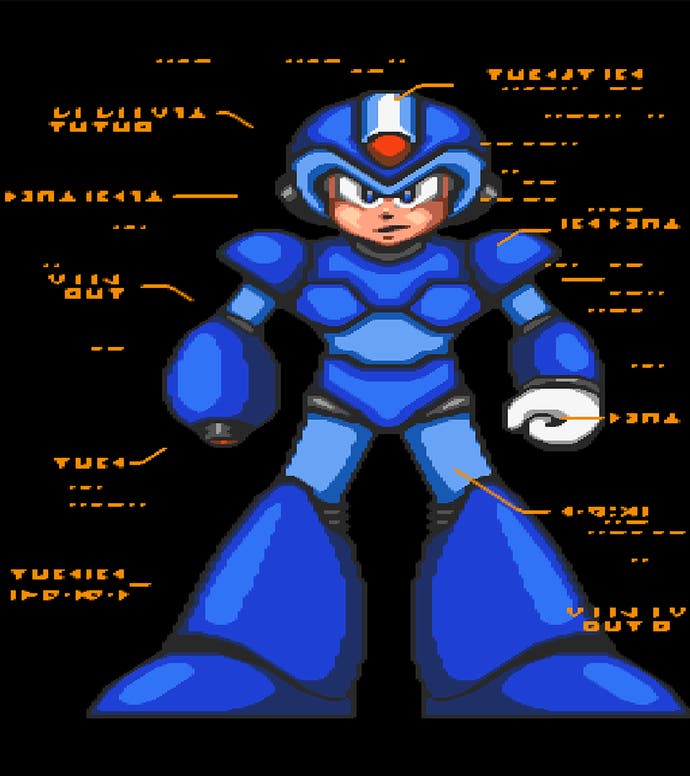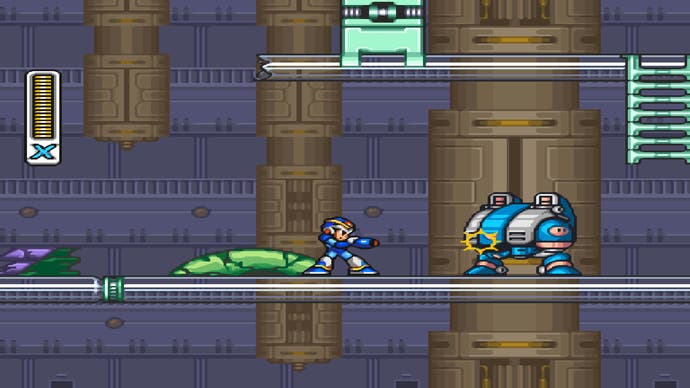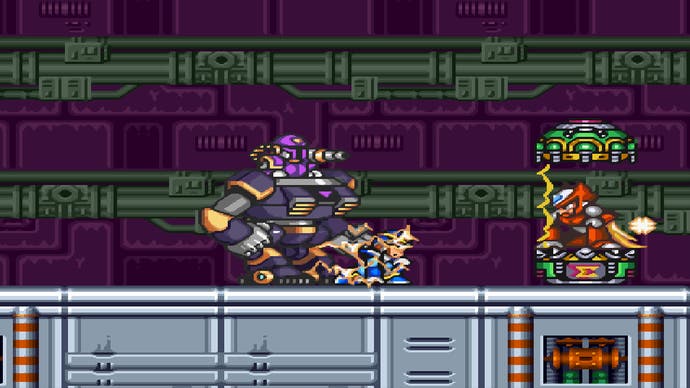How Mega Man X rewrote the player/character relationship
One of gaming's great tragic heroes.
"So you've come."
The capsule sits alone, sealed in an abandoned portion of the tunnel beneath the snow. As X approaches, the device comes to life. It lights up, and slides open. A life-size projection of Dr Light, creator of Mega Man X, appears. There's no greeting, no hint of joy in the normally jovial face. Instead, the expression is stern, severe even, when it says the words, "So you've come".
In video games, there is an implicit understanding that you, as the player, and the on-screen protagonist, your digital counterpart, are on the same side. You are unified by a common goal, battling against Bowser as Mario to save the Princess, or working as Master Chief to stop the Covenant in Halo. But occasionally, and perhaps more interestingly, the player and their digital avatar are lumbered with incompatible goals and the relationship is defined by one-sided control, rather than trust and cooperation. An early example - and it may be the greatest example of all - is Mega Man X.

Originally released in 1993, Capcom's Mega Man X was intended to be a next generation leap for the popular Capcom series, taking it from the NES to the new SNES console. The game received rave reviews for its 16-bit graphics, outstanding soundtrack, and mature storytelling.
Set decades in the future, Mega Man X himself, or X, is the first of what would become a new type of machine, one that could think, feel, and act fully on its own - a true artificially created being. From his design, a technical revolution would come, and an entire generation of machines with the same thoughts, emotions, and free will as humans would be born. These were the Reploids.
Like humans, Reploids possess morality and a conscience. They also have desires, and a sense of fairness. A society based on cooperation is undermined by exploitation, and, as humans have done many times before, a group of Reploids begin a violent revolution, leading to the events of the game. These revolutionaries are dubbed Mavericks, while the Reploids fighting to restore peace take the name Maverick Hunters.

X is the rare example of a tragic video game hero, one who is deeply opposed to the actions you take in playing the game. A pacifist at heart, he joins the Maverick Hunters keenly aware that he is committing acts of violence, and knows there are no guarantees that his actions will lead to anything other than more violence. Unlike the previous Mega Man series, every enemy X defeats is a life taken.
As the player of the game, meanwhile, speeding through levels and eliminating enemies is second nature. Every boss defeated adds to your arsenal of weapons, giving you new tools to explore, uncover secret power-ups, and exploit enemy weaknesses. There's no hesitation to the atrocities committed, in other words. The fast, smooth action is extremely rewarding, and the fun of combat is an exceptional motivator to continue playing. And it's completely antithetical to the being X wants to be.
That's an unusual position for video games to take. When games do create a hard disconnect between a player and protagonist, it's far more common for a game to force players to perform actions they don't want to in order to proceed, There's the infamous "No Russian" mission of Call of Duty, where you are forced to participate in a massacre of civilians in an airport. Or there are the times we stand by while Arthur Morgan buys into you-know-who's lies in Red Dead Redemption 2. Or the countless horrific moments in The Last of Us.

"X, I've taken too much damage." The blood trickles down from the corner of his mouth. "Auto repair systems can't handle it. My power is fading fast." X kneels silently beside his fallen friend, whose body has been obliterated from the waist down. It was Zero that had saved him from Vile the first time they fought. Zero who had encouraged him, reminding X that he wasn't designed to be a war machine, but still had the ability to grow stronger. And it was Zero who lay dying, after detonating his own body to destroy Vile's seemingly invincible Ride Armor.
There's a visible cost to the war in Mega Man X. The first level takes place on a city highway. Abandoned and destroyed vehicles line the road. Damage to the motorway has created deadly pitfalls. The surface deteriorates, crumbling where commuters once drove.
Widespread destruction isn't unique to Mega Man X. Aliens destroyed portions of the world in the Contra series, a massive fleet is attacking Corneria in Star Fox. But X is the agent of much of the destruction, and the damage done has visible consequences.


Climb aboard the airship and defeat Storm Eagle and it crashes into the Powerplant, knocking out lights and disabling electrical obstacles. Overcome Chill Penguin in the snow-covered mountains, and the streams of molten steel in the factory are frozen over. Put an end to Launch Octopus in the Marine Base, and the forest floods.
To the player these changes are beneficial. The Factory floor is no longer a deathtrap. The added buoyancy of the water in the forest makes reaching secret areas possible. There are fewer dangers in the Powerplant. But in-game these are ecological and civil disasters, with long term ramifications that could take years to recover.

Sigma, the leader of the Mavericks, has seemingly been obliterated. X stands on a cliff overlooking the floating fortress of the Mavericks as it burns and crashes into the sea. There's no joy on his part, just melancholy reflection. X gazes at the destruction he helped cause, and wonders why he chose to fight. Was there another way?
Beating the final boss is a moment of jubilation for players. Overcoming the obstacles, growing in skill and ability, and challenging the antagonist in a grueling, multi-step battle, is an adrenaline-fueled triumph. But it's a one-sided joy.
The ending of Mega Man X, where X stands solemnly overlooking all that transpired, is the moment where it all truly sinks in. As the player, we are treated to the inner monologue of the protagonist. Rather than satisfaction, he feels regret. Regret for those that were lost. Regret for his role in the destruction. And regret for not knowing a better way to end the violence.
Like many games of the era, Mega Man X ends with X backtracking through one of the levels, while the characters in the game are introduced. It's equal parts curtain call, and an In-memoriam segment. With the exception of X and the player themselves, everyone introduced has died violently over the course of the game.
It's not until after the final credits, and a "Thanks for playing!!" message, that one final scene plays out. An image of Sigma appears on a CRT monitor, revealing that the body that was destroyed was a temporary shell, and that he will return for X soon. It's one final moment of joy for players, that a sequel was certain to come, and a twist of the knife for X, whose violent actions and loss haven't brought an end to anything.
It's a reminder of the final lines from the scene on the cliffside:
"How long will he keep on fighting? How long will his pain last?"
